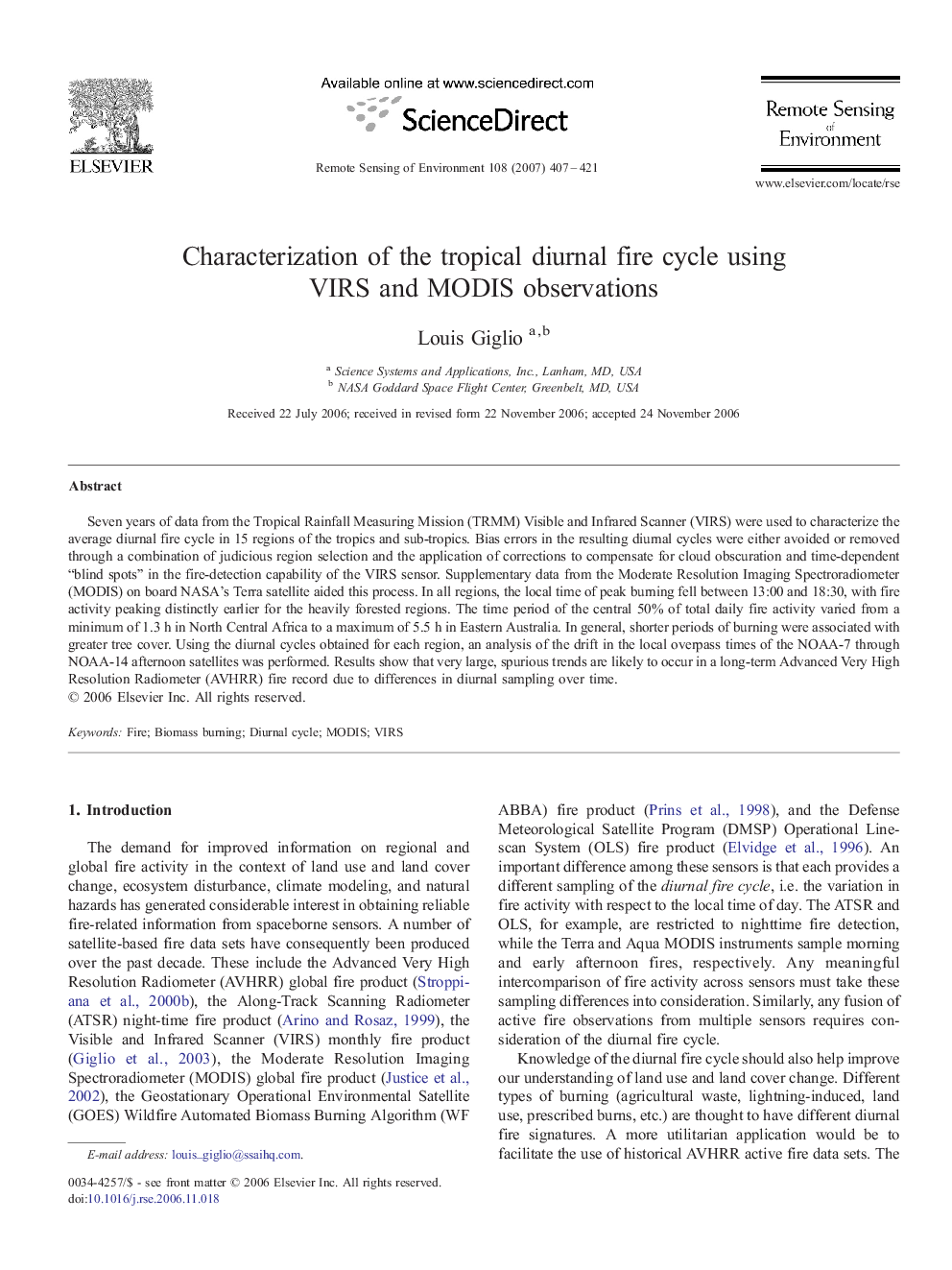| کد مقاله | کد نشریه | سال انتشار | مقاله انگلیسی | نسخه تمام متن |
|---|---|---|---|---|
| 4460726 | 1621345 | 2007 | 15 صفحه PDF | دانلود رایگان |

Seven years of data from the Tropical Rainfall Measuring Mission (TRMM) Visible and Infrared Scanner (VIRS) were used to characterize the average diurnal fire cycle in 15 regions of the tropics and sub-tropics. Bias errors in the resulting diurnal cycles were either avoided or removed through a combination of judicious region selection and the application of corrections to compensate for cloud obscuration and time-dependent “blind spots” in the fire-detection capability of the VIRS sensor. Supplementary data from the Moderate Resolution Imaging Spectroradiometer (MODIS) on board NASA's Terra satellite aided this process. In all regions, the local time of peak burning fell between 13:00 and 18:30, with fire activity peaking distinctly earlier for the heavily forested regions. The time period of the central 50% of total daily fire activity varied from a minimum of 1.3 h in North Central Africa to a maximum of 5.5 h in Eastern Australia. In general, shorter periods of burning were associated with greater tree cover. Using the diurnal cycles obtained for each region, an analysis of the drift in the local overpass times of the NOAA-7 through NOAA-14 afternoon satellites was performed. Results show that very large, spurious trends are likely to occur in a long-term Advanced Very High Resolution Radiometer (AVHRR) fire record due to differences in diurnal sampling over time.
Journal: Remote Sensing of Environment - Volume 108, Issue 4, 29 June 2007, Pages 407–421